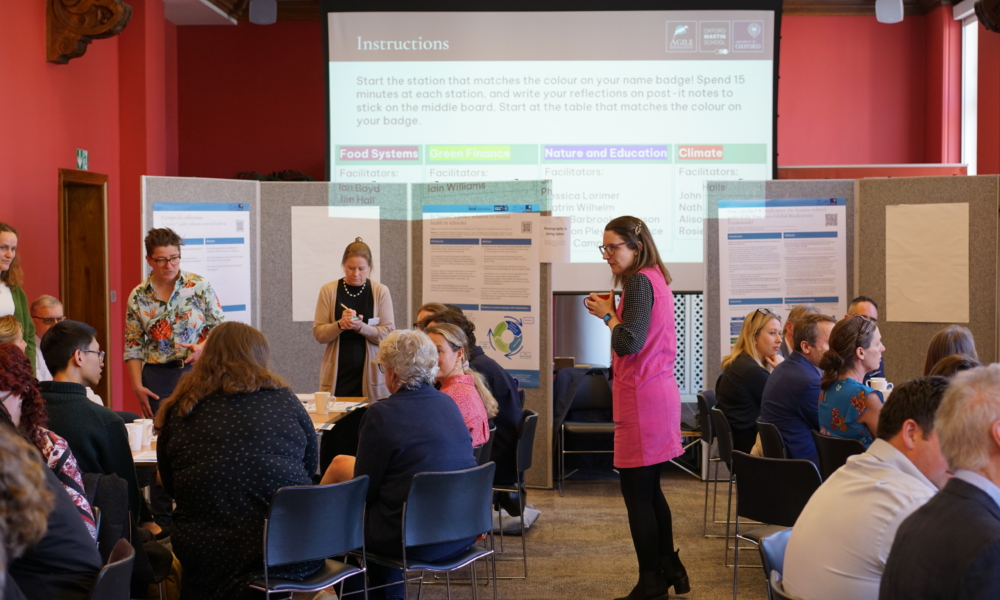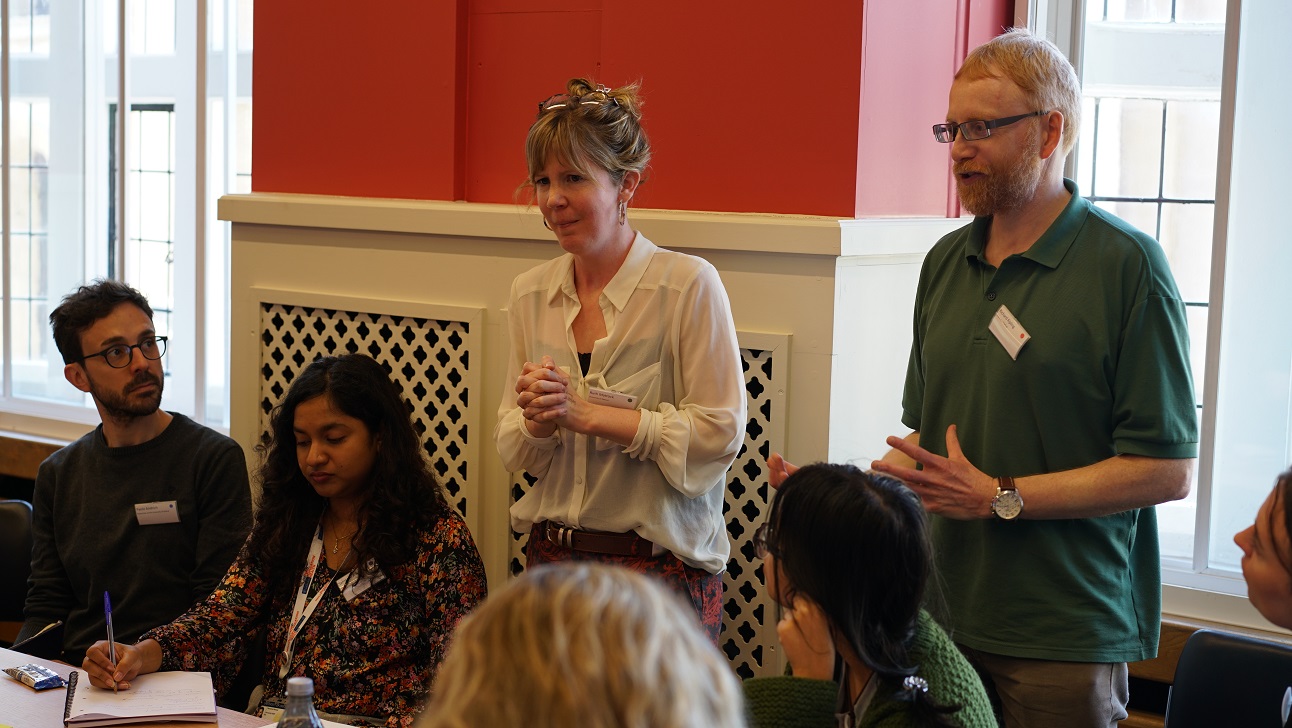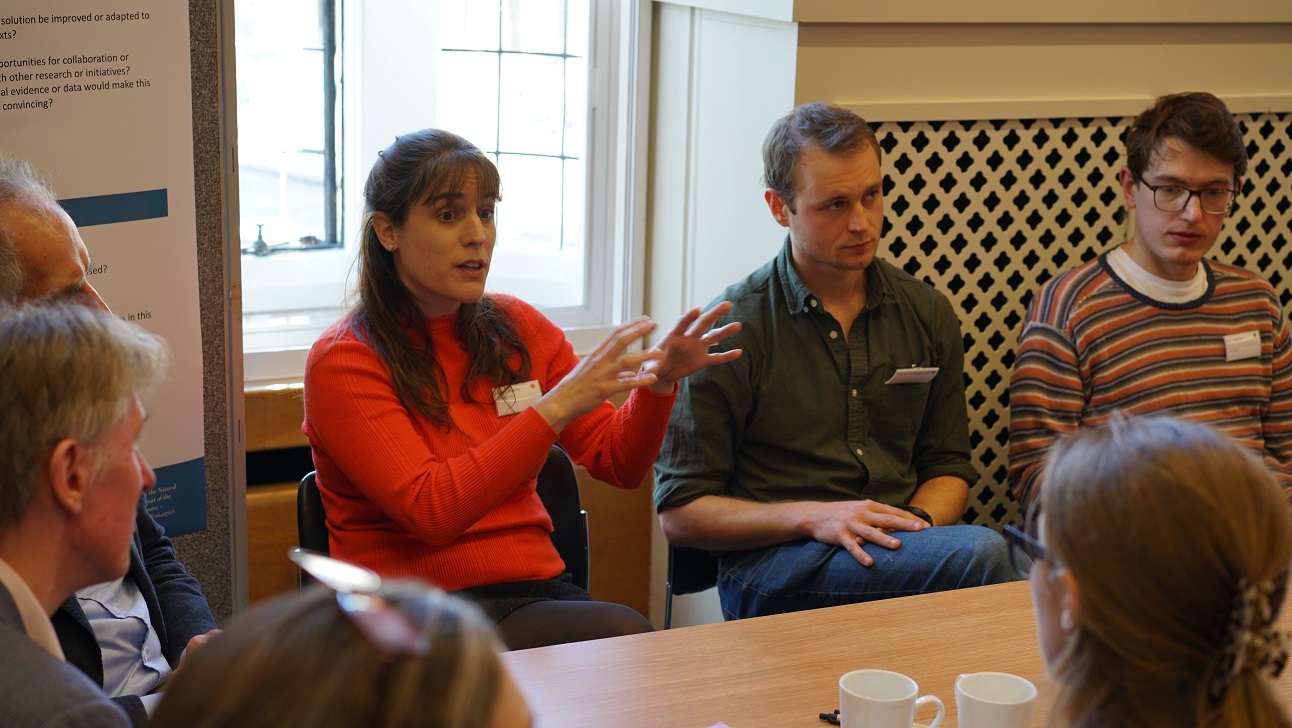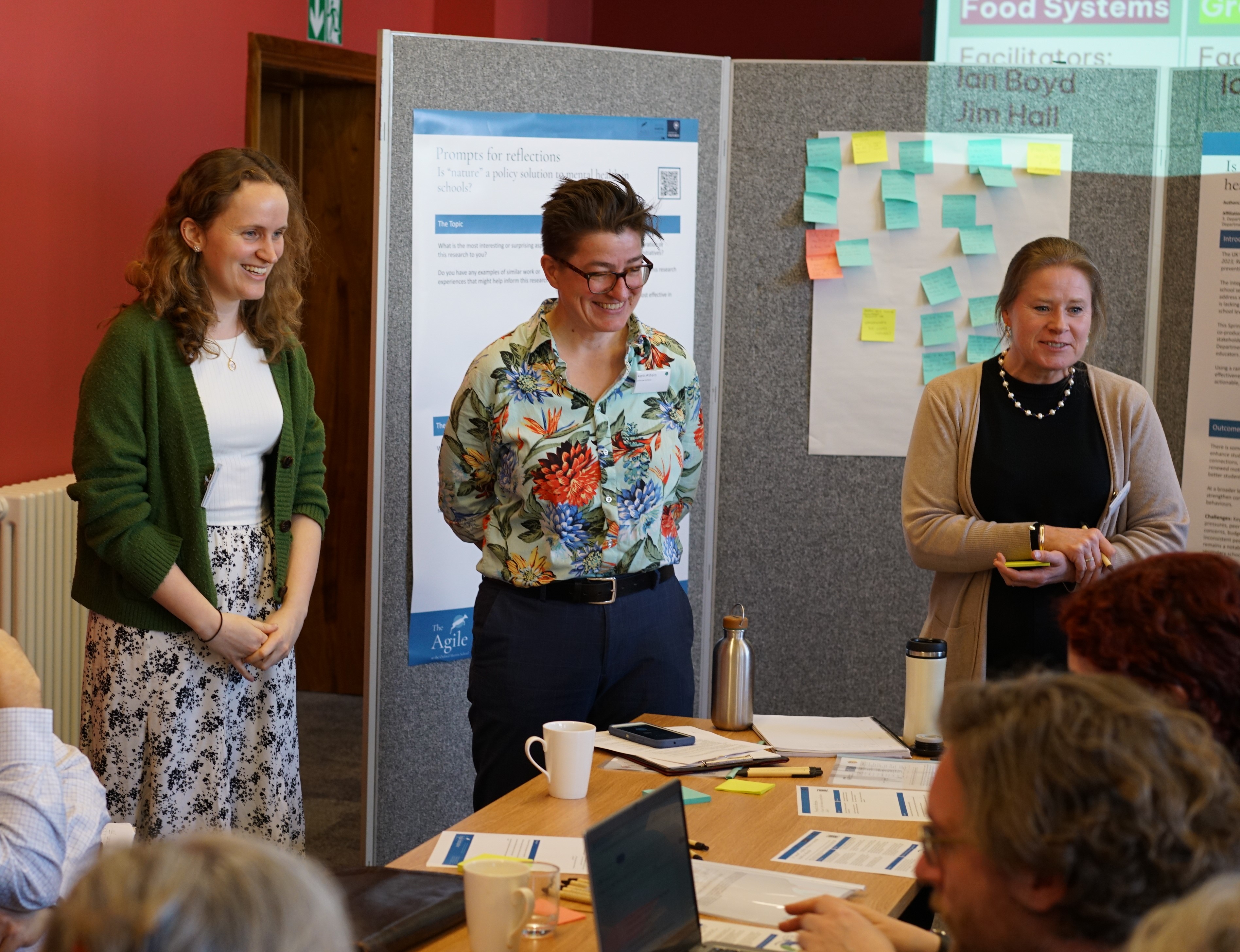Reflections on our showcase event, ‘Putting science into action’
Recent News
- Agile Initiative Science-to-Policy Project Fund
- Rainforests, nature and biodiversity at COP30
- Connecting practitioners and researchers

We recently held a half-day showcase and forum which celebrated the work of Agile Sprints while asking the question: how can we build a research system to address environmental crises? Agile is an experimental, iterative programme, and with every round of calls for Sprints we have done things slightly differently, always responding to the key question: what role can we play in improving the connections between research and policy?
What was the format?
Our showcase, Putting Science into Action on 20th March 2025 opened up a set of discussions on the learning, appetite, and further potential of fast-paced, impact-focused research. Our Sprint researchers presented their work, engaging with a community of researchers, practitioners and policy professionals in an interactive session where attendees had 15 minutes each at 4 ‘stations’ to engage with the research. The stations presented Sprint research on regenerative agriculture, greenhouse gas uncertainties, nature-based programmes for mental health in education, and the Global Biodiversity Framework’s UK finance goals. In a room of 70 people, the atmosphere was lively and discussions fast-paced, reflecting Agile itself! You can view the posters they presented on our outputs page.
“I was impressed by the variety of issues tackled. Being at the interface of science and practice/delivery myself, I am aware of the challenges in bridging the gap – creating policy relevant researchable questions. The model developed by Agile has developed a way of doing this effectively.”
Professor Rosie Hails
(Nature and Science Director at the National Trust, Chair of the Defra Biodiversity Expert Committee and member of Agile’s Independent Advisory Group)
We presented our programme-level research, reflective work we’re conducting in order to understand what impact Agile is having on policy, research, and individuals. We also held a timely discussion session on land use, led by Professor Sir Ian Boyd and Professor Sir Charles Godfray. And finally, we invited Pro-Vice Chancellor for Research, Professor Patrick Grant, to bring in the wider perspective from the central university.
What’s next for Agile?
In feedback, we asked attendees what Agile should think about next. They said:
- What are some successful methods of engagement with different policy bodies, types, and individuals
- How to best work within both interdisciplinarity and genuine co-creation
- How early and mid-career development fits into an impact-focused environment
- Continued work on how to speed up research!
It is vital to hear what the community think we should be focussing on. We will be folding these ideas, and all the discussion in the event, into our upcoming sprints and wider work on research culture at Oxford and beyond.
What did our researchers get out of it?
Ruth Mattock

Researcher on the Regenerative Agriculture Sprint
“Presenting the project quickfire to the rotating groups of attendees and readying for their questions was a bit daunting, but actually it was a really useful way to communicate and learn from the questions that were asked. The people in front of us each time had completely different takes on the project and interests in it – someone asked if we’d engaged with the fashion and beauty industry, another person recommended another initiative for us to talk to, and someone else challenged our whole framing of the problem. It all made for some valuable prompts to our own thinking, questions we might not have asked ourselves, as well as lessons for us on what messages from the project are most important.”

Sophus zu Ermgassen
Co-lead on the Global Biodiversity Framework Finance Goals Sprint
“I found the showcase a genuinely enjoyable, fast-paced and interesting event. It was useful to have to rapidly describe our research to a new set of people every few minutes, to fine tune how to communicate our research. And I found people’s honest and blunt feedback on our work under time pressure extremely useful, and outside the realms of the kind of engagement we normally get when discussing with colleagues.”

Jessica Lorimer
Researcher and co-ordinator on the Nature-based Programmes Sprint
“The 15-minute rounds gave me a chance to practice how I speak about the project with external partners, especially as an early career researcher. By the third round, I noticed I was adjusting my “pitch” more effectively, having picked up on some of the recurring questions and gaps. So, it was a valuable opportunity not just to present but also to reflect on how we might strengthen or clarify parts of our approach.”
Katrin Wilhelm
Co-Lead on the Nature-based Programmes Sprint
“It was great to see so much interest in our work! The questions from the interactive session had a range of effects: some helped us clarify how to better frame the project – as evaluating the existing evidence base for nature-based programmes and mental health and wellbeing in secondary schools, rather than generating new evidence ourselves. Others prompted ideas for future directions, highlighting a clear appetite for this type of research, even beyond a 12-month Sprint. It was a bit intense at times, like a round of spitfire questioning, but it was a valuable experience – connecting us with new audiences and challenges outside our usual Agile Sprint context.”
Sharron Pleydell-Pearce
Head of Strategic Research Development at the University of Oxford and member of Agile’s management group
“I facilitated one of the interactive sessions where the Sprint teams discussed their projects with a group of attendees and took questions. Having the agenda designed to have the interactive session focused on the Sprints themselves meant both programmatic questions of whether the process is effective and Agile is meeting its goals could be discussed and evaluated in plenary, but the details of the Sprints could be explored in more depth with the researchers on the ground. This was a well-designed and delivered event which gave the attendees much to consider!”


